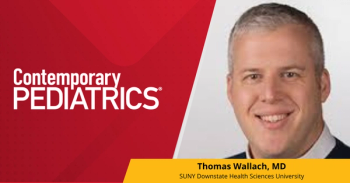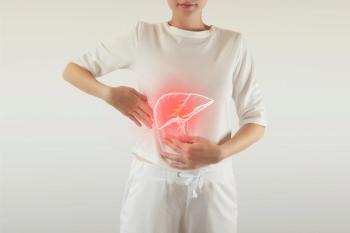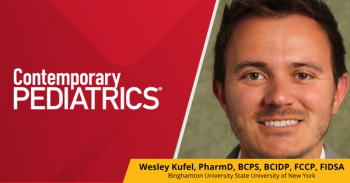
NEUROLOGY: Brain pain and migraine variants
Recognizing that children’s migraines don’t necessarily look or act like those of adults can speed diagnosis and appropriate treatment, said Eric Pearlman, MD, PhD, during his presentation “Brain Pain: Migraine and Its Variants.”
Part of Contemporary Pediatrics’ coverage of the 2015 AAP Annual Conference. For more coverage, click
Recognizing that children’s migraines don’t necessarily look or act like those of adults can speed diagnosis and appropriate treatment, said Eric Pearlman, MD, PhD, during his presentation “Brain Pain: Migraine and Its Variants.”
First, parents (and some physicians) need to realize that children can get migraines. Parents whose children are suffering from headaches sometimes say that their physician told them children could not get migraines. Migraines occur less frequently in children (4%–6%, age 6–12 years) than adults (12%; 6% men, 18% women). Pearlman noted, however, that he has treated migraines in children aged as young as 18 months.
Pediatric migraines might not last as long, although they can occur frequently. The definition of adult migraines specifies that they last at least 4 hours if untreated. Adults might require several hours of sleep to resolve a migraine, whereas with rest or a brief nap, a child’s migraine may resolve in 1 to 2 hours.
Some pediatric variants of migraine behave differently than those of adults. In particular, children with abdominal migraines can experience the classic symptoms of nausea, vomiting, photophobia, and phonophobia, but their primary complaint is recurrent abdominal pain lasting 1 to 48 hours. They may also experience diarrhea. These children often end up at the gastroenterologist, to be scoped and tested for abdominal etiologies and usually treated for reflux.
Another pediatric migraine variant involves cyclic vomiting up to 4 to 8 times hourly, often to the point of dehydration. These cycles typically begin at night or in the early morning, although the child’s health is perfectly normal in between.
Recognizing that migraines, including these variants, can afflict children could lead to earlier diagnosis and treatment. For acute migraine, rizatriptan, zolmitriptan, sumatriptan, and almotriptan are US Food and Drug Administration (FDA)- approved for children aged as young as 12. Rizatriptan has been studied in children as young as age 6 years. For migraine prevention, topiramate is FDA approved for ages 12 to 17 years.
If physicians make the right diagnosis, then children will get started on safe, effective treatment faster. This relieves not only migraine pain, but also the significant impact such episodes can have on family quality of life, as children miss school and parents miss or leave work to care for them.
Eric Pearlman, MD, PhD, is an associate professor and chair, Department of Pediatrics, Mercer University School of Medicine–Savannah Campus, and medical director and physician-in-chief, Children’s Hospital of Savannah, Georgia.
Commentary
Dr Pearlman is correct about the underdiagnosis and undertreatment of migraine being significant problems. Even for adults, in whom 18% of women and 6% of men have migraine, undertreatment and inappropriate diagnosis mean that 50% of migraineurs never receive a diagnosis.1,2
Migraine is the seventh most disabling condition according to the World Health Organization.3 Children with migraine have impaired quality of life, similar to that for children with rheumatoid arthritis or cancer.4
Properly diagnosing migraines matters. Headache is a nonspecific symptom with multiple etiologies. If the clinician is unable to make a more specific diagnosis, then he or she may consider additional testing and may be less clear with the patient regarding prognosis. Prescribed treatments could vary, but will probably be nonspecific analgesics.
In contrast, when making the diagnosis of migraine, the clinician can explain that this is a well-described primary headache disorder without need for further testing. The patient can be given the explanation that it is a recurring headache syndrome, and that acute attacks should be treated and/or prevented. The clinician may consider migraine-specific treatments.
In keeping with this idea, a study (presented at the American Headache Society 57th Annual Scientific Meeting in June) from Mercy Health System in Missouri showed that patients given the diagnosis of migraine are more likely to be prescribed an evidence-based medication.5 The portion is still much lower than it should be, however, so we need to continue to work to improve specificity of diagnosis and treatment.
Two separate analyses from the American Migraine Prevalence and Prevention study support the idea that we can make a difference in preventing worsening of migraines. Comparing headache characteristics in subjects who responded to the mailed survey in successive years, the rate of transformation from episodic (<15 days/mo) to transformed/chronic migraine (>15 days/mo) was about 2.5% per year. Subjects with high-frequency episodic migraine (>10 days/mo), who used barbiturates or opioids (ie, nonspecific treatment for the headache), or who reported poor or very poor treatment effect had a higher risk of progressing. In other words, frequent migraine and poor response to treatment have a higher likelihood of progressing to worsened migraine.6
Subjects who reported use of migraine-specific triptans did not have increased risk (over those who used acetaminophen) to transform to chronic migraine, and they were more likely to report a favorable acute response.7 Therefore, using migraine-specific acute medication, and doing a better job treating the acute attacks, may prevent worsening of the migraine condition over time.
Ongoing projects and resources that aim to improve knowledge about pediatric migraine include:
· American Migraine Foundation. Spotlight on: migraine in children.
· American Migraine Foundation. Migraine awareness in schools project.
· Jennifer Bickel, MD, and colleagues at Children’s Mercy Hospital in Kansas City have developed a project to increase awareness of migraine in schools, encouraging kids to then make an appointment with their primary care physician (PCP). These researchers have developed resources for both patients and PCPs: Headache relief guide.
· At the Children’s Hospital of Philadelphia (CHOP), a grant given to CHOP from Pfizer has allowed us to utilize our electronic medical record (EMR) to enhance diagnosis of headache disorders through clinical decision support tools. We’ve developed a patient questionnaire to help solidify the correct diagnosis. Building this into our EMR will help us develop an algorithm to suggest a diagnosis to the provider, and in the future, we could add suggestions for treatment. We are currently using this in neurology, but plan to modify it for use in primary care.
References
1. Lipton RB, Bigal ME, Diamond M, et al. Migraine prevalence, disease burden, and the need for preventive therapy. Neurology. 2007;68(5):343–349.
2. Lipton RB, Diamond S, Reed M, et al. Migraine diagnosis and treatment: results from the American Migraine Study II. Headache. 2001;41(7):638–645.
3. Vos T, Flaxman AD, Naghavi M, et al. Years lived with disability (YLDs) for 1160 sequelae of 289 diseases and injuries 1990-2010: a systematic analysis for the Global Burden of Disease Study 2010. Lancet. 2012;380(9859):2163–2196.
4. Powers SW, Patton SR, Hommel KA, Hershey AD. Quality of life in childhood migraines: clinical impact and comparison to other chronic illnesses. Pediatrics. 2003;112(1 Pt 1):e1–e5.
5. Nicholson R. Pediatric migraine treatment: poor adherence to evidence-based acute medication guidelines. Abstr OR13. American Headache Society 57th Annual Meeting, Washington, DC, June 18–21, 2015.
6. Bigal ME, Serrano D, Buse D, et al. Acute migraine medications and evolution from episodic to chronic migraine: a longitudinal population-based study. Headache. 2008;48(8):1157–1168.
7. Lipton RB, Fanning KM, Serrano D, et al. Ineffective acute treatment of episodic migraine is associated with new-onset chronic migraine. Neurology. 2015;84(7):688–695.
Christina Szperka, MD, is director, Pediatric Headache Program, Children’s Hospital of Philadelphia (CHOP), Pennsylvania.
Newsletter
Access practical, evidence-based guidance to support better care for our youngest patients. Join our email list for the latest clinical updates.













